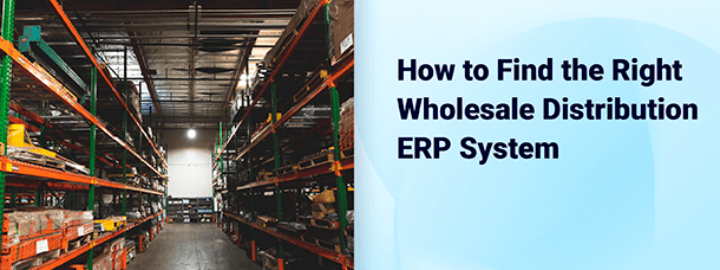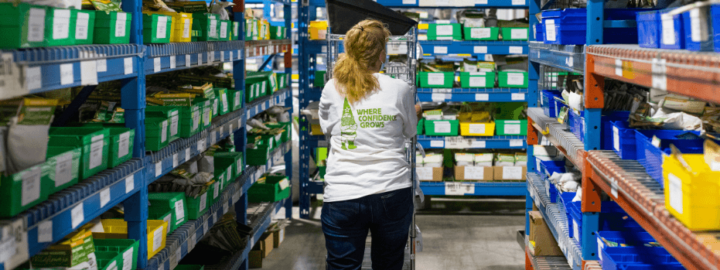
Organizations directly involved in global trade know that tariffs are a cost of doing business. The impact and burden of managing the tariff process extend beyond entities that import and export, affecting nearly all businesses—particularly small and mid-sized companies. But managing tariffs is more than just paying a fee at the port, and it is also not an isolated challenge for your accounting department. Instead, particularly during these turbulent and unpredictable times for global trade, it can be a disruptive force that sends ripples across your entire supply chain, creating hidden costs, operational complexities, and strategic uncertainty.
These challenges affect every business differently. A manufacturer faces different pressures than a distributor or a retailer. However, the root cause of the challenges each business faces is often the same: disconnected systems and manual processes that can’t keep up with an ever-changing global landscape. When information is siloed and outdated, even minor tariff miscalculations can lead to significant consequences that impact your profitability, business relationships, and growth potential.
Understanding the ripple effects of changing tariffs is the first step toward building a more resilient and efficient operation.
For Manufacturers: The Threat to Production Margins
Manufacturers sit at the beginning of the supply chain, where the accuracy of material costing is fundamental to the profitability of the final product. When tariff management is handled manually, several risks emerge.
The most significant challenge is achieving an accurate landed cost. The price paid to a supplier is only one part of the equation. Without a system that automatically incorporates fluctuating tariffs, freight, and insurance, there is no way to precisely estimate the true cost of materials. This leads to inaccurate product costing, which means poorly informed pricing strategies for finished goods. You might be setting prices that are too low to be profitable or too high to be competitive, all because of inaccurate data from the start.
This uncertainty also hampers smart sourcing. How can you effectively compare a supplier from Vietnam with one from Mexico if you can’t see the full, tariff-included cost of their materials? What may appear like a better price on paper might be more expensive once you receive it. This lack of clarity prevents you from making the data-driven decisions needed to optimize your supply chain.
For Distributors: The Squeeze on Profitability
Distributors operate on notoriously thin margins, making them especially vulnerable to the financial impact of tariff volatility. Their business model depends on buying in bulk and reselling with a modest markup, so any unexpected cost turns a profit into a loss.
When a tariff rate changes unexpectedly, distributors are often caught in the middle. They have already committed to a purchase price with their supplier and a sales price with their customer. If a tariff hike occurs in between, that extra cost comes directly out of their pocket. Without a real-time view of these costs, they may not even realize a shipment is unprofitable until weeks later, when the books are closed.
This also puts a strain on the relationship between suppliers and customers. Passing on sudden cost increases to customers can damage trust and make your pricing appear unreliable. At the same time, absorbing these costs is not a sustainable long-term strategy. This constant financial pressure makes it difficult to forecast accurately and build the stable and predictable environment needed for growth.
For Retailers: The Risk of Selling at a Loss
For ecommerce and retail merchants, tariff complexity directly impacts operations. Retailers often manage hundreds or thousands of items sourced from around the world, and the profitability of each one can be impacted by import costs.
Imagine a popular product line that suddenly becomes subject to a new 25% tariff. If a merchant’s system doesn’t provide real-time visibility into this change, they could continue selling that product for weeks at the old price, effectively losing money on every single sale. This is a common scenario for businesses relying on spreadsheets, where cost data is only updated weekly, monthly, or worse.
This lack of real-time insight also complicates inventory management and marketing efforts. Retailers might invest heavily in advertising a product that is no longer profitable, wasting valuable marketing spend. The inability to see true costs in real time hampers the agility you need to adjust prices, find alternative suppliers, or shift focus to higher-margin items.
Breaking the Cycle with a Unified Platform
These challenges—eroded production margins, squeezed distributor profits, and unprofitable retail sales—all stem from the same core issue: a lack of real-time, centralized information. When your teams are working with outdated data from disconnected systems, you are always reacting to problems instead of preventing them.
Acumatica Cloud ERP provides a comprehensive and unified business solution to manage the complexities of global trade. By integrating procurement, inventory, sales, and finance, our open and flexible platform gives you the clarity needed to see the whole picture.
- Real-Time Visibility: Acumatica helps supply chains incorporate tariff-related charges directly into inventory costs. These costs can be allocated using Acumatica’s Landed Cost functionality and are fully reflected within its integrated accounting and inventory modules. This means you see the financial impact of every import faster, not weeks later. This empowers business leaders to make proactive decisions, whether you’re a manufacturer adjusting pricing for inflated product costs, a distributor adjusting pricing to maintain margins, or a retailer shifting marketing strategies to maximize profits.
- Improved Cost Calculations: Our system streamlines tariff, freight, and other fee analysis for improved insights into total costs and sales margins. This empowers everyone in your supply chain to make smarter, more profitable decisions based on accurate, up-to-the-minute data.
- A Foundation for Collaboration: When everyone is working from the same information, collaboration between departments improves. Procurement can work more effectively with finance, and sales teams can set prices with confidence. This alignment strengthens your entire operation.
A unified business management system like Acumatica Cloud ERP can safeguard you from the ripple effects of tariff complexity and resulting disruption to your business. Empower your teams with the tools they need to navigate global trade with confidence and turn a turbulent landscape into your competitive advantage.
 Canada (English)
Canada (English)
 Colombia
Colombia
 Caribbean and Puerto Rico
Caribbean and Puerto Rico
 Ecuador
Ecuador
 India
India
 Indonesia
Indonesia
 Ireland
Ireland
 Malaysia
Malaysia
 Mexico
Mexico
 Panama
Panama
 Peru
Peru
 Philippines
Philippines
 Singapore
Singapore
 South Africa
South Africa
 Sri Lanka
Sri Lanka
 Thailand
Thailand
 United Kingdom
United Kingdom
 United States
United States













